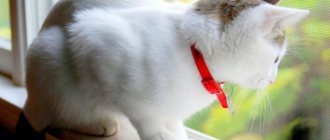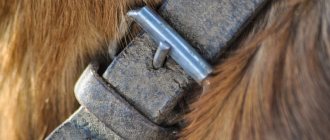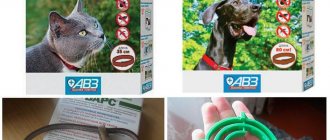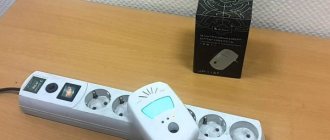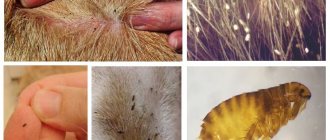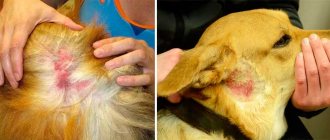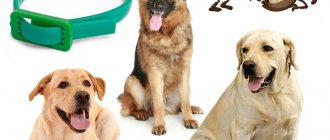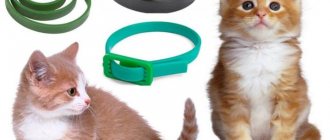The Kiltix collar is considered an effective antiparasitic and insectoacaricidal agent for protecting pets. This veterinary product is manufactured by Bayer from Germany. Anti-tick collar for animals from Kiltix is a good alternative to sprays, drops on the withers, which last for about a month. It has a longer duration of action, and at the same time relieves owners of cats and dogs of different breeds from constantly thinking about antiparasitic treatment of the animal.
Return to contents
When can you put a collar on your puppy?
The age when you can put a Kiltix collar on a puppy does not differ from the standard situation when an animal is introduced to this accessory. Experienced breeders accustom pets older than the 11th week to it, however, they use handmade straps made from soft fabric without fasteners.
You cannot put a flea collar on a puppy of this age, as the animal, while playing, can unfasten the buckle or get caught on the edges of sharp objects.
Kiltix
If several small pets are kept together, they will begin to chew on the edges of the straps. And given that Kiltix contains toxins, this behavior of puppies is fraught with dire consequences. 2-3 months is the optimal time at which age you can put a collar on a puppy. But getting used to a new object for a dog should happen gradually.
Tips for choosing
For each dog, the collar is selected individually, taking into account the following criteria:
- the size of the product is important for the animal’s comfortable well-being;
- age and individual characteristics of the pet - not all collars are approved for use by puppies, as well as old or sick dogs, pregnant and lactating dogs;
- manufacturer - proven brands guarantee the quality and reliability of products, which is important for the safety of the dog.
Detailed information about the product - restrictions and features of use, concentration of active ingredients - is indicated in the instructions. Be sure to study it carefully. It wouldn't hurt to consult a veterinarian either.
What collars are suitable for puppies
Sometimes you have to protect babies from blood-sucking parasites. They can become infected from their mother or another dog living in the house, or also accidentally while playing outside. The danger of bites for a puppy is as follows:
- severe itching, scratching, which leads to the development of anemia due to significant blood loss for a small dog;
- there is a high probability of contracting infections and worms carried by parasites due to an incompletely formed immune system.
There are collars on sale that are designed specifically for puppies.
But products intended for adult dogs are not suitable for puppies, as they can provoke allergic reactions and weaken the body. You need to choose special products that are approved for dogs up to 6 months. They are odorless and are used from three weeks, two months or other ages. This is described in more detail in the instructions.
Veterinarians do not recommend putting a collar on a puppy under 2 months, nor do they recommend using other types of protective agents - drops, shampoos, tablets.
The following collars are suitable for puppies:
- Insectal plus (Russia). Impregnated with permethrin and fipronil, it lasts from 2 to 4 months and is used from 8 weeks of age.
- Insectal combo is a low-toxic, odorless product based on ivermectin. Cannot be worn on dogs under 2 months of age; contraindicated for Sheltie and Collie breeds.
- Hartz Ultra Guard Flea (Germany) – used from three months of age, provides protection for up to seven months, the active substance is tetrachlorvinphos.
Video: how to choose and put a collar on a dog
How to accustom a dog to a collar?
Any dog, regardless of age, is wary of wearing a collar. Moreover, the older the animal, the more difficult it is for him to come to terms with a new object attached to his neck. Therefore, you can start putting a collar on your puppy from a very young age.
The animal must be absolutely healthy and calm before being introduced to the flea belt. The slightest stress will inevitably lead to the dog being hostile to an unfamiliar object.
Note! The new Kiltix collar has a specific smell that is difficult for dogs to accept. Therefore, you need to wear protective equipment on an animal that is already accustomed to straps around its neck.
Experienced breeders give the following training recommendations:
- let them sniff an unfamiliar object (a regular one, not a flea collar);
- do not tighten or squeeze your neck with the strap (there should be a gap of two fingers between the material and the wool);
- the best moment to put it on is before a meal or a walk (then the dog will have the necessary reflex, and the collar will begin to be associated with upcoming positive emotions);
- do not leave the collar on a dog that is not accustomed to it for more than 5-10 minutes (you can repeat the procedure 2-3 times a day);
- do not remove the strap if the puppy tries to throw it off (it is better to distract him with a game and unfasten the buckle when the animal calms down).
After the puppy is completely accustomed to wearing a regular strap, you can try wearing a flea strap along with the main collar.
Efficiency
Reviews about the Kiltix anti-tick collar for dogs are mostly positive, but there are also negative reviews.
I have been using it for 6 years for my pets. I can confidently say that this is the best tick repellent for dogs. Does not cause any side effects. Protects firmly for 6 months. During the season I do not find a single tick attached. The cost is high, but it's worth it.
Veronica, Moscow
The Kiltix collar was recommended to us by a veterinarian as the safest protective product. I put it on my pet, and after 3 days I regretted it. Sores began to appear behind the ears, more every day. At first I couldn’t connect it with the collar, so I rushed to the vet. They diagnosed us with an allergy and prescribed medications for treatment. The use of the accessory was prohibited. I can’t say if this is individual intolerance or if this happens often.
Alina, Tver
Externally, the Kiltix collar does not look very attractive. For that kind of money we could have come up with something more beautiful. It is very easy to put on – you just need to tighten it around your neck. At first there is a specific smell, stains on the fur, some white powder appears, then everything goes away, nothing is visible. The product did not cause any allergies in the dog, and from the first days of wearing it he felt great. Protects firmly for 6 months. We walk with him in the forest, through the fields, and runs along the street. I often examine the body and find no fleas or ticks.
Elena, St. Petersburg
In some situations, for increased protection, the simultaneous use of a Kiltix collar and Bayer drops on the withers is allowed.
Description of the Kiltix collar
The Kiltix flea and tick collar is a yellow polyvinyl strap. The original product has the company’s engraving – . The product has several fixation modes (2 or 3 depending on size). The product is placed in a sealed plastic film and packed in a cardboard box.
Kiltix against ticks and fleas is available in 3 size ranges:
- for puppies – product length 35 cm, designed for young animals or miniature breed dogs;
- 48 cm belt for medium-sized breeds;
- for large dogs – a collar 66 cm long.
With proper use, the warranty period of the collar is 6 months. In addition, the product has a shelf life of 5 years. If it has expired, the use of flea control is prohibited.
Varieties of Kiltix
Kiltix Collar is a drug to protect different breeds of dogs from parasite bites. It is perfect for both small and large animals. There are 3 types of collars on the market:
- Collar for large dogs. Length is 70 cm.
- Collar for medium sized dogs. Length does not exceed 53 cm.
- Collar for miniature breeds. Length is 38 cm.
The choice of size directly depends on the height and size of the pet.
Collars come in different sizes: for small, medium and large dogs
Active ingredient and principle of action
The main components of the product are propoxur and flumethrin. Their combination is evenly applied to the polyvinyl belt. The insecticides contained in the Kiltix collar begin to affect insects immediately after being put on. Due to evaporation and friction, they are transferred to the dog's skin and hair.
How to wear
Propoxur has been known in veterinary medicine since the 1970s, but is still included in many flea products. It affects the body of arthropods by stimulating glycolysis. As a result, oxidative reactions are inhibited, important biochemical processes are disrupted, paralysis and death occur.
Flumethrin is a neurotoxic compound whose action is directed at voltage-gated sodium channels. The substance causes disruption of the conduction of nerve impulses in adults and larvae. The insect, regardless of the stage of maturity, loses the ability to move and dies. Flumethrin is a proprietary development of Bayer in the 80s. But the collars use an updated formula of the substance, because... Ticks and fleas have developed resistance to the former.
Important! The combination of propoxur and flumethrin is considered a compound of increased toxicity. In order not to harm the pet’s health, it is forbidden to use a collar and give antiparasitic tablets at the same time.
Pros and cons of anti-parasite collars for cats and dogs
Like everything that exists, cat collars have their positive and negative aspects; below we will analyze whether it is worth using a collar or whether it is better to choose something else.
Pros of collars
- Easy to use - unlike other means of protection against parasites, you just need to put the collar on in the spring and you can forget about parasites for the entire warm season.
- Reliability – good collars guarantee protection for your pet for the entire period specified in the instructions.
- Cheap - since one collar lasts for 4-6 months, it will cost less than drops or aerosols that should be used to treat the animal every week.
- Practicality - using the collar does not cause difficulties and does not take time to process. Also, the collar will not stain furniture or carpet, unlike liquid protective equipment.
Cons of collars
- Efficiency - collars often lose their protective properties much earlier than the manufacturer indicates on the label. Also, cheap collars do a poor job of repelling parasites, and they move through the animal’s fur in an inhibited state.
- High toxicity - collars are impregnated with potent substances that destroy parasites. In most cases, they do not harm the animal, but there are cases when animals suffer serious skin injuries and even poisoning from insecticides in the collar.
- Chronic diseases - this information is kept silent by the collar manufacturers themselves, but if you regularly use a parasite collar, after a few years the animal may develop diseases that are caused by toxic substances in the collar. They do not lead to serious diseases, but diseases of the thyroid gland, liver and kidneys are also quite dangerous.
Be aware of the negative effects of parasite control and do not neglect your pet's health. If you use a collar or other means to repel parasites, carefully monitor the condition of your pet and at the first signs of poisoning or an allergic reaction, immediately contact a veterinary clinic.
Application procedure
The Kiltix flea and tick collar is a complex product that must be used according to the rules established by the manufacturer. Otherwise, instead of getting rid of parasites, you can only harm the animal.
Terms of use
How to use a tick and flea collar is described in detail in the instructions. The manufacturer recommends the following procedure:
- Wash the dog well with zoo shampoo and comb the matted fur. Wait until the animal is completely dry.
- Open the package and take out the product.
- Unfold the collar and remove all plastic bridges.
- Place the belt on the dog, adjusting it to fit. There should be 2 fingers (approximately 1 - 1.5 cm) between the neck and the polyvinyl tape.
- Pass the free end of the belt through the loop and trim off the excess.
The Kiltix collar does not tolerate contact with water. Before bathing, dogs take it off and put it on when the coat is completely dry. Frequently wearing a flea and tick belt in the rain will significantly reduce the service life of the product.
Contraindications for use
The Kiltix collar has a hazard category of 3. In some cases, its use in dogs causes itching and discomfort in the cervical area. The symptom goes away spontaneously after a couple of days. However, there are situations when it is prohibited for an animal to wear a belt.
Contraindications include:
- the presence of infectious diseases in the dog;
- age less than 2 months;
- allergy to the components of the product (a symptom of this is inflammation of the skin, often observed in short-haired breeds);
- pregnancy and lactation in bitches.
Animal owners who have wounds on their palms are only allowed to work with Kiltix while wearing gloves. The entry of active components into the bloodstream can cause a feeling of salivation, vomiting and indigestion.
Contraindications
The active components do not penetrate the systemic bloodstream, are concentrated in the sebaceous ducts, and have a local effect, covering the hair. Side effects are rare in dogs. Kiltix is a safe remedy for ticks and fleas.
A direct contraindication is the presence of individual intolerance to the components. It manifests itself as an allergic reaction on the skin, deterioration in general health - increased salivation, lacrimation, anxiety, loss of appetite, sleep disturbances, etc. If side effects appear in the dog, the Kiltix collar must be removed.
Product not used:
- pregnant and lactating females;
- sick, recovering, weakened pets;
- puppies under 2 months of age;
- dogs weighing less than 2 kg.
Important!
A pet with a collar should not be allowed near small children; after contact with the animal’s fur, you should wash your hands thoroughly with soap.
Advantages and disadvantages
According to reviews from dog owners, the Kiltix flea and tick collar provides reliable protection.
- That’s why they don’t bite...
This format of the product has a number of advantages:
- ease of use;
- ability to adjust the length of the strap;
- active components paralyze insects before they stick to the skin, while oral medications and injections will not begin to act without bites;
- insecticides do not get inside the dog.
The Kiltix collar, although considered a relatively safe product, has certain disadvantages:
- The collar is dangerous for fish, birds, and bees.
- The range of the belt is limited. It is not able to kill all pests on large dogs.
- The effectiveness and duration of action of Kiltix decreases under prolonged exposure to water and direct sunlight.
- The active ingredients are distributed throughout the fur. During licking, the dog inevitably swallows some of the components.
You should consult your veterinarian before using Kiltix. It will help identify the presence of hidden infections or conduct a test for individual intolerance to propoxur-flumethrin components.
Types of anti-tick and flea collars
Different collars use different substances that have greater or lesser toxicity and effectiveness against parasites. Collars for cats and dogs are divided into three types.
- Biological - have a repellent effect; they contain various herbs and essential oils that are unpleasant for parasites. Such collars have low toxicity, which allows their use on weakened animals, pregnant women or kittens and puppies.
- Chemical - such collars can only be used on adult and healthy animals. They protect animals more reliably than the previous ones, but are more toxic, which makes their use not always rational.
- Ultrasonic - such devices can be used for all animals, they are completely safe and do not emit odor. Ultrasonic collars operate due to ultrasonic or electromagnetic waves emitted by the device. Many people complain that devices in this group are ineffective.
Composition and release form
The insectoacaricidal agent is produced in the form of a tape made of polyvinyl chloride, equipped with special notches for easy stretching and removal from the animal.
Collar coating composition:
- diazinon 15%;
- polyvinyl chloride composition “S naturel”;
- epoxidized soybean oil;
- peppermint oil;
- Barium laurate.
The product contains the dye Rusprintex, thanks to which Beafar collars are produced in a wide range of colors.
There is also a Beafar collar for cats.


